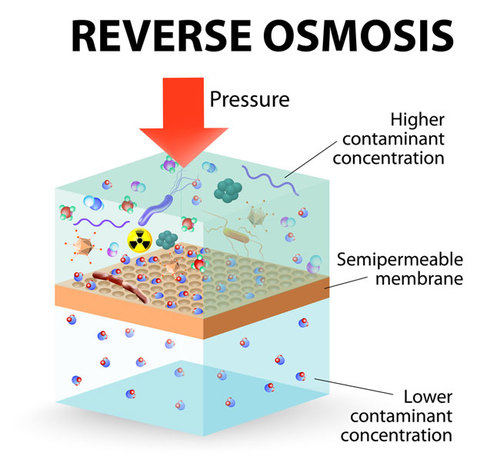CALL TODAY 1-800-441-6281
CALL TODAY 1-800-441-6281

Reverse Osmosis Water Treatment Compared With Filtration

Calcium and manganese well water contamination clogs shower heads, can ruin appliances and diminish the life of hot water heaters but untested and untreated well water can contain many more harmful substances. Here are two water treatment options.
As we become more aware of the health risks in our environment, one major area of concern is the delivery of safe drinking water. In 1974 Congress passed the Safe Drinking Water Act, instituting regulations to ensure the safety of our water supply. The law requires municipal water systems to test for various contaminants and report to their customers annually. This law has resulted in safe drinking water for all municipal system users.
If your water comes from an individual well, testing and treatment become your responsibility. Technology has improved and offers homeowners access to affordable water treatment systems. Whether you choose to install a “point of use” system providing treated water at a single outlet, or a “point of entry” system to treat the water as it enters your home, systems are available to meet all of your needs.
Determine the Intensity of the Problem With A Water Test
The first step when choosing the right treatment option is identifying any problems by thoroughly testing your water. Treatment systems are designed to address certain issues and proper diagnosis will lead you to the best solution.
Water Filtration Systems
Filtration systems are effective “point of entry” systems for the removal of most naturally occurring contaminants such as viruses, bacteria and microscopic organisms and are also effective when dealing with inorganic contaminants. Filtration is moderately effective against volatile and semi-volatile organic contaminants including some pesticides and solvents.
Filtration systems work by passing water through a series of filter stages such as activated charcoal and filtration mediums with microscopic pores designed to trap contaminants and lock them to the filter. Effectiveness depends on the pore size of the filters. Depending on the contaminant, pore size is set at the size most effective for mitigation.
Reverse Osmosis Water Treatment
Reverse osmosis water treatment is a “point of use” system that is highly effective against inorganic contaminants. RO is not effective when dealing with volatile and semi-volatile organic contaminants and is not recommended for dealing with bacteria and other microscopic organisms.
An RO system consists of an RO module, a storage tank and a single faucet for dispensing treated water. The module contains a semi-permeable membrane allowing water to selectively pass through. The water is then collected and held in the storage tank. Contaminants are flushed from the membrane and directed into the waste stream. Because an RO system only collects about 25% of the water used (the remaining 75% is lost through the process) it is impractical for POE. Treated water is generally used for cooking and drinking and it can take from 2 to 78 hours to produce a single gallon. There are several types of membranes and it is extremely important to know what contaminants need removal before investing in a system.
Designing A Solution To Your Water Contamination Problem
Both systems are highly effective. Installing pre or post RO filtration can work to further remove additional contaminants not addressed by reverse osmosis water treatment alone. Many homeowners find that combining filtration with reverse osmosis water treatment is the best “whole house” solution. The best way to determine the right system for your family’s safety is to speak with a certified water treatment specialist. They’ll work with you to test your water, interpret the results and then design the best system to provide safe drinking water and peace of mind for your loved ones.

